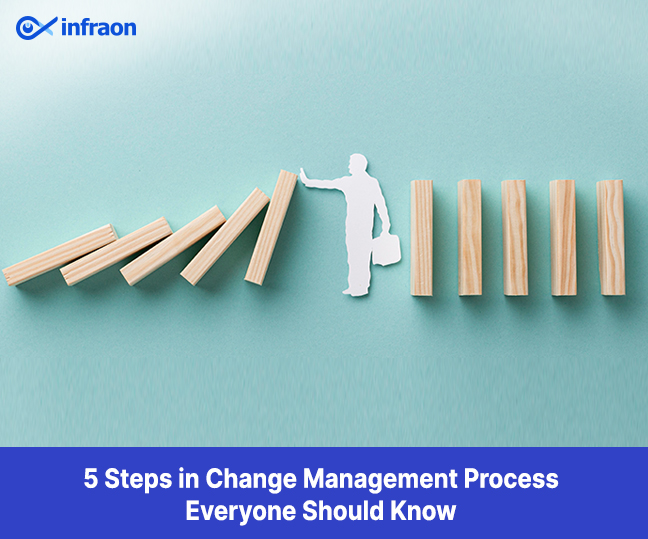Change Management is the transition of individuals, teams, and organizations to a future state of ownership and value through sustained user adoption.
Skipping this step may result in a failed implementation or lost revenue. Conversely, incorporating change management into one’s overall plan will help one get up and run quickly and effectively. Accelerate user adoption, exceed goals, enable effective training and documentation, and create a culture of continuous improvement.
Organizational change generally refers to actions taken by a company to change or adjust a significant component of its organization. This includes corporate culture, internal processes, underlying technology or infrastructure, corporate hierarchy, or other important aspects.
Organizational change is either adaptive or transformational.
Adaptive changes are small, incremental, iterative changes that organizations make to evolve their products, processes, and workflow automation strategies over time.
Transformational change is broad in scope and often involves dramatic, sometimes abrupt departures from the status quo.
5 Steps in Change Management Process
Step 1: Increasing Conscience and Importance
During the preparation phase, managers focus on helping employees identify and understand the need for change. They act as a force for change and raise awareness of the various challenges and issues facing organizations that create dissatisfaction with the status quo. Getting the initial buy-in from those who help implement the change eliminates friction and resistance later.
Step 2: Developing an Interest in Change
- Define change and communicate reasons for change
- Determine the vision and consequences of change
- Communicate vision early and provide frequent updates to employees by using a self-service portal and identify their ability to change
- Start a live datum that works backward from the beginning and defines the steps that need to be taken
Step 3: Allowing Change
Successful change requires the right tools. Without knowledge and the ability to change, one cannot move forward. For example, when deploying new software, one should:
- Install and deploy software
- Onboard new employees
- Provide training and guidance to employees
In this step, one has to reverse engineer the solution by determining what one’s employees need to implement one’s solution and giving them the tools and skills required.
Step 4: Driving and Maintaining Movement
As already mentioned, motivation is the key to change management. The company should actively involve employees in maintaining progress. This is especially true for change initiatives with longer life cycles. The company should change visions and create stories to help communicate the benefits of change. But to truly understand the value of a program, employees must experience it.
Offering rewards for short-term gains is an excellent way to do this. Such rewards need not be fancy or extraordinary.
A manager should continue to drive change and inspire and drive others as the change program progresses.
Step 5: Evaluation and reinforcement
A change program will not be complete until it is made permanent. One should confirm this change after program completion, or it may not be preserved. Unfortunately, inertia, habit, and residual resistance can make some programs lose their grip on reality. At worst, employees may revert to their old ways.
Therefore, it is important to:
- Continue to strengthen the change program
- Demonstrate the benefits of the change program
- Measure progress, evaluate the feedback, and adjust the program as necessary
- Once completed, the program should be thoroughly reviewed.
Learn from data, employee and stakeholder input. This information will help one gain insight into what is working and what one needs to fix next time.
Why Should One Choose Infraon for Change Management?
Infraon ITSM’s change management software is designed to help one reduce incidents and expedite changes into one’s IT ecosystem. It enables quick and safe changes to reduce stress on one’s team and spend more time serving them.
Conclusion
Change never happens alone. Successful change management requires interactivity between all aspects of an organization: leaders, individual contributors and tools.
The days of five-year plans are over. Today’s speed of business requires an agile organization that changes every 12-18 months. Comprehensive and complete control over the change management process is the only way a company can survive and thrive.

